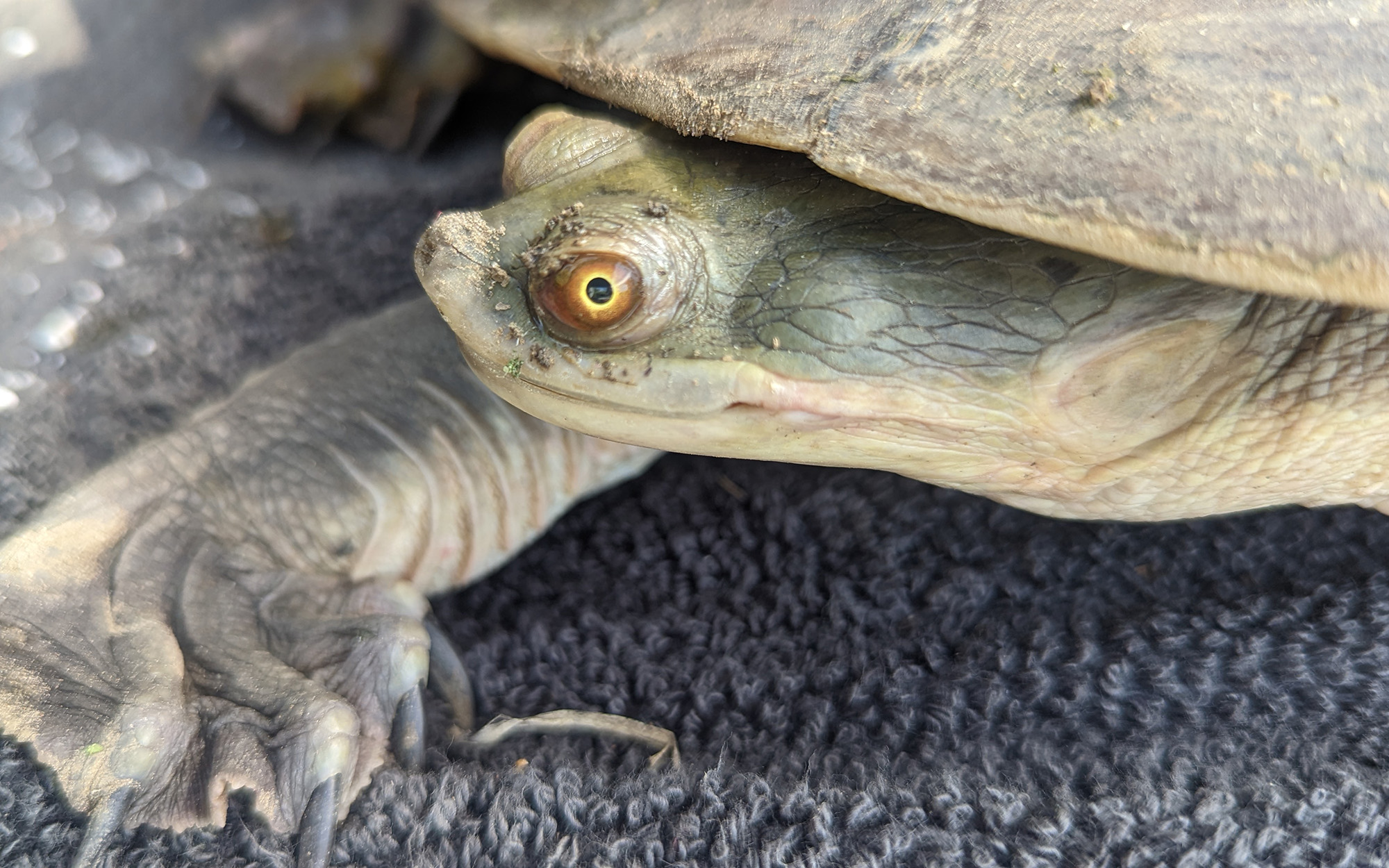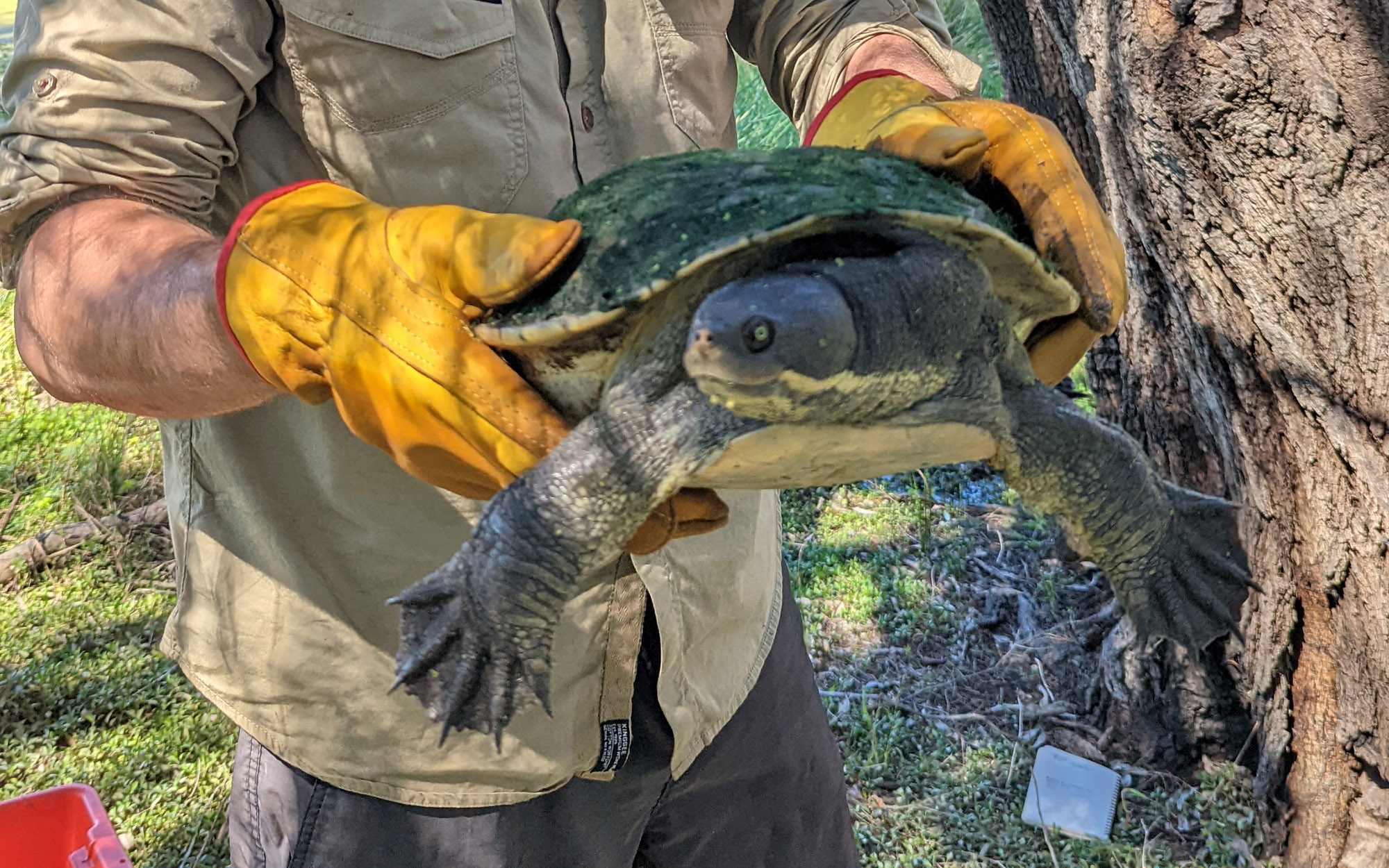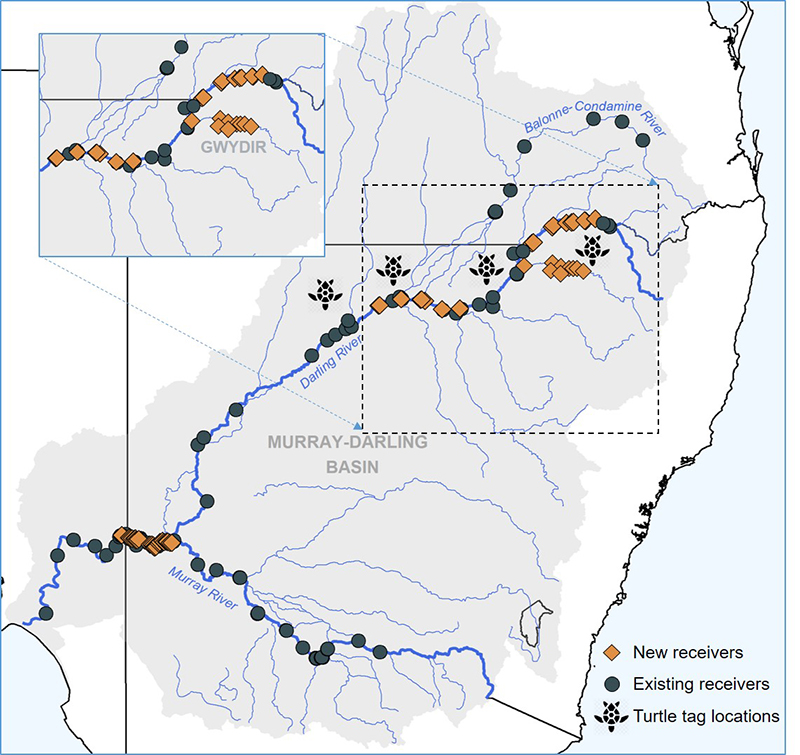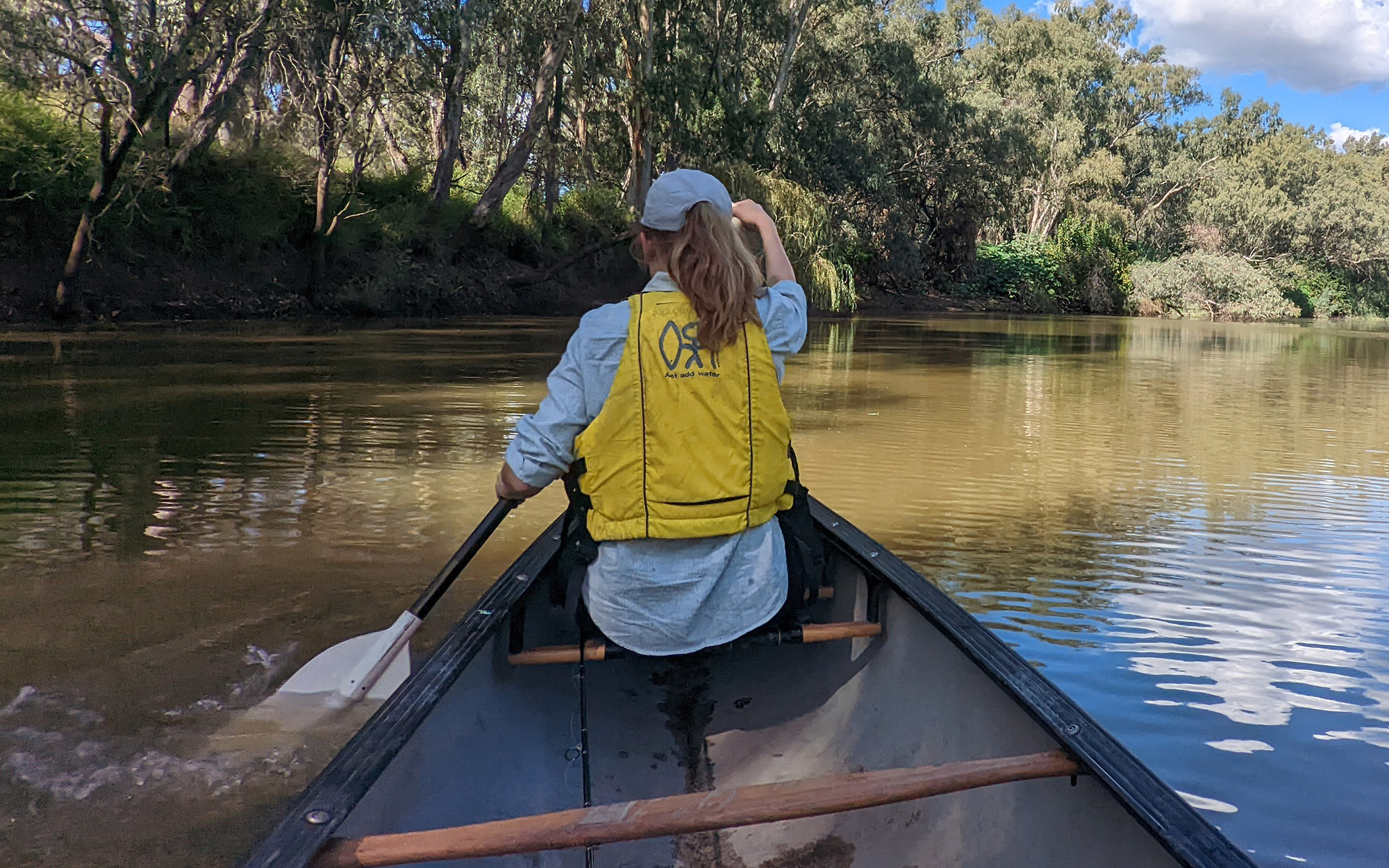Turtles and flows
Turtles and flows: tracking the movement of freshwater turtles on floodplains and in river channels of the Northern Murray-Darling Basin
The Surface Water Science team in the department's Water Group is collaborating with Dr Deborah Bower and Dr Eric Nordberg from the University of New England to monitor how turtles respond to flow. Freshwater turtles are major players in river and floodplain ecosystems and can even improve poor water quality caused by decaying fish. The team will be tagging 80 turtles, 40 Broad-shelled turtles (Image 1) and 40 Murray River turtles (Image 2) in the Barwon-Darling River, Gwydir River, and habitats of the Gwydir floodplain.


There are a number of detection stations setup within these river systems (Figure 1). The turtles are caught in traps and a passive acoustic transmitter tag is attached to the side of their shells. The turtle’s movements can then be picked up by both new and existing acoustic receiver stations at fixed locations throughout the river system. We will collect movement data for these species under a range of flows for the next 5 years. The findings of this project will help us better understand river health and connectivity to inform water management including both water sharing and floodplain management plans.

Research paper
Learn more about the importance of flows for turtles.
Download the paper (.PDF 1100KB)